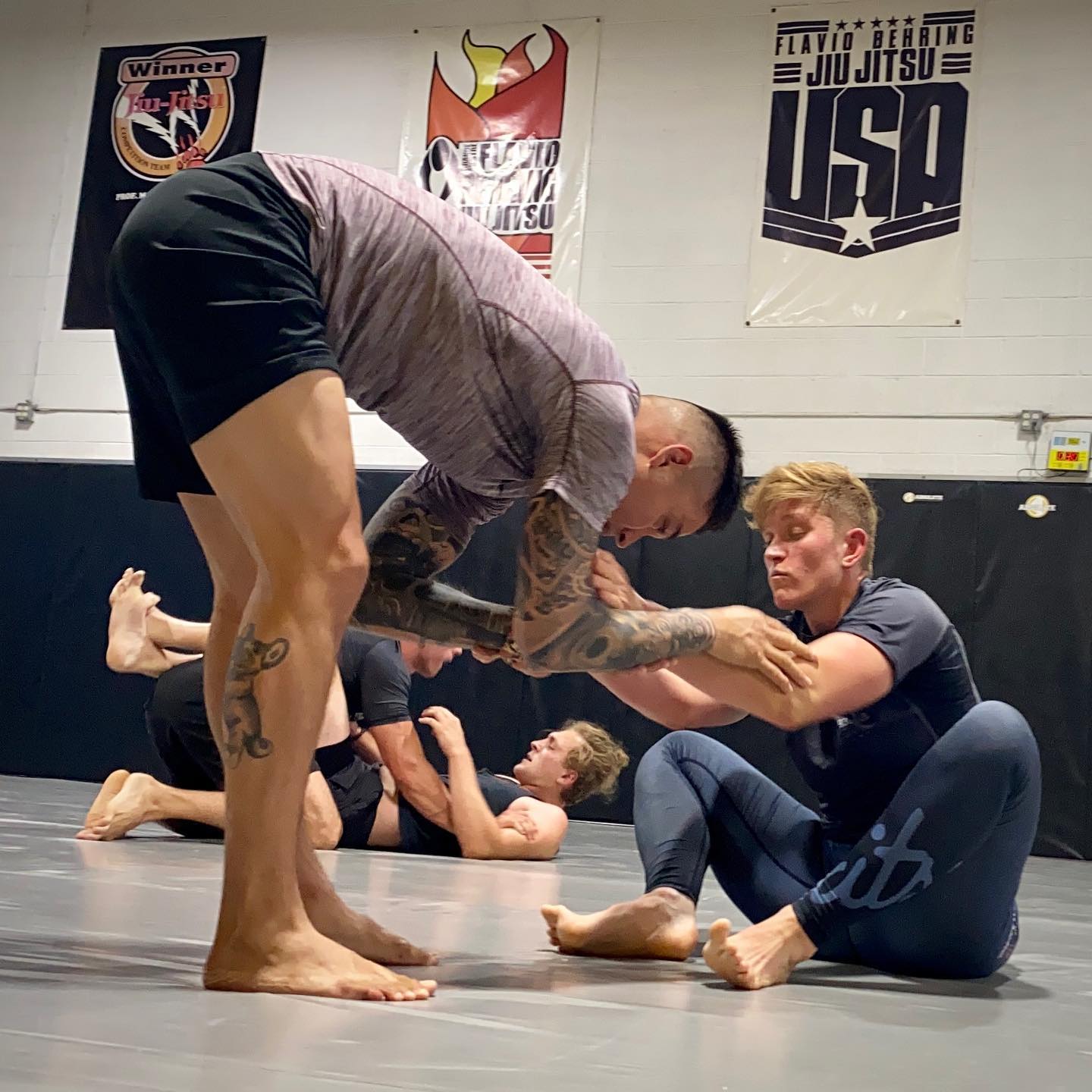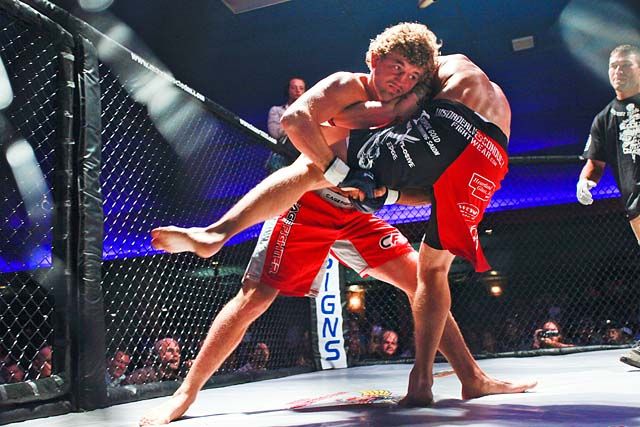Yes, wrestling is a combat sport. It involves physical competition between two individuals.
The goal is to gain a superior position or pin the opponent. Wrestling has ancient roots and is popular worldwide. It is known for its skill, strength, and strategy. Wrestlers use various techniques to overcome their opponents. The sport has different styles, such as freestyle and Greco-Roman.
Each style has unique rules and moves. Wrestling is also part of the Olympic Games, highlighting its global importance. The sport requires intense training and discipline. Wrestlers must be in top physical condition. They also need mental toughness and resilience. Wrestling teaches valuable life skills, like perseverance and respect. Understanding wrestling as a combat sport helps appreciate its rich history and demanding nature.

Credit: absolutemma.com
Introduction To Wrestling
Wrestling is a dynamic and intense sport. It has a rich history and a strong presence in modern times. From ancient traditions to contemporary competitions, wrestling has evolved greatly. This article explores the journey of wrestling, its roots, and its current form.
Historical Background
Wrestling dates back thousands of years. It was part of the ancient Olympics in Greece. Various cultures, including the Egyptians and Babylonians, practiced wrestling. These early forms of wrestling were more than sport; they were rituals and demonstrations of strength. Ancient carvings and texts depict wrestling matches. They show the significance of wrestling in ancient societies.
Modern Wrestling
Today, wrestling is a popular sport worldwide. There are different styles, including freestyle and Greco-Roman. Freestyle wrestling allows the use of legs in both offense and defense. Greco-Roman wrestling focuses on upper body techniques. Both styles are featured in the modern Olympic Games. Professional wrestling, like WWE, combines athleticism and entertainment. It has a huge fan base and is broadcast globally. Amateur wrestling is also widely practiced in schools and colleges. It teaches discipline, physical fitness, and mental toughness.
| Style | Key Features |
|---|---|
| Freestyle | Allows use of legs, dynamic and versatile |
| Greco-Roman | Focuses on upper body, traditional techniques |
Wrestling continues to grow and adapt. It remains a testament to human strength and skill. Whether ancient or modern, wrestling captivates and challenges athletes worldwide.

Credit: www.martialnerd.com
Defining Combat Sports
Wrestling is indeed a combat sport. It involves physical competition between two athletes, aiming to pin or control their opponent. Techniques include throws, takedowns, and holds.
Combat sports involve physical contests between athletes. These contests focus on direct physical confrontation. Wrestlers, boxers, and martial artists all participate in combat sports. They use strength, strategy, and skill to compete. Combat sports have a long history. They are popular worldwide.
Characteristics
Combat sports share common traits. They involve one-on-one competition. Athletes engage in direct physical contact. The goal is to dominate the opponent. Rules ensure safety and fairness. Training is rigorous and disciplined. Athletes develop physical and mental toughness.
Examples
There are many types of combat sports. Wrestling is one example. It involves grappling and holds. Boxing is another. It uses punches and footwork. Mixed martial arts (MMA) combines techniques from various disciplines. Judo and Brazilian Jiu-Jitsu focus on grappling. Karate and Taekwondo emphasize striking techniques. Each sport has unique rules and strategies. “`
Wrestling Vs Other Combat Sports
Wrestling stands out in the world of combat sports. It has unique features that set it apart from other combat disciplines. This section explores the key differences and similarities between wrestling and other combat sports.
Key Differences
Rules: Wrestling has its own set of rules. In wrestling, the goal is to pin your opponent. In other combat sports, the aim can vary. For example, in boxing, the goal is to knock out your opponent.
Techniques: Wrestling involves grappling and pinning techniques. In contrast, sports like MMA include striking and submissions. Each sport has distinct techniques and strategies.
Gear: Wrestlers wear singlets and wrestling shoes. On the other hand, boxers wear gloves and mouthguards. Different gear suits the needs of each sport.
Similarities
Despite the differences, wrestling and other combat sports share some common ground.
- Physical Fitness: Both require high levels of fitness. Athletes need strength, endurance, and agility.
- Mental Toughness: Combat sports demand strong mental focus. Athletes must stay calm under pressure.
- Training: Intense training regimes are common. Athletes dedicate hours to practice and conditioning.
Understanding these key differences and similarities helps appreciate the unique nature of wrestling. It also highlights the shared values among combat sports.
Physical Demands Of Wrestling
Wrestling is one of the oldest sports in history. It requires immense physical strength and mental toughness. Wrestlers endure intensive training sessions, which test their endurance, strength, and agility. These physical demands make wrestling a unique and challenging combat sport.
Strength And Conditioning
Wrestlers must possess exceptional strength and conditioning. Their training routines often include:
- Weightlifting: Builds muscle strength.
- Cardio exercises: Enhances endurance and stamina.
- Flexibility drills: Improves range of motion.
These exercises ensure wrestlers can handle intense matches. The combination of strength and conditioning helps them maintain peak performance.
Injury Risks
Wrestling poses significant injury risks. Common injuries include:
| Injury Type | Description |
|---|---|
| Sprains and Strains | Overstretching or tearing of ligaments and muscles. |
| Dislocations | Joints forced out of their normal positions. |
| Fractures | Broken bones from falls or impacts. |
To minimize these risks, wrestlers must use proper techniques. They also need to wear protective gear and follow safety protocols during training and matches.
Technical Aspects Of Wrestling
Wrestling is a popular combat sport involving various techniques, moves, and rules. Understanding its technical aspects helps in appreciating the complexity and skill involved. This section will explore the key technical aspects of wrestling.
Techniques And Moves
Wrestling techniques and moves vary based on the style. Here are some common techniques used:
- Takedowns: Bringing the opponent to the ground.
- Pins: Holding the opponent’s shoulders on the mat.
- Throws: Lifting and throwing the opponent.
- Joint Locks: Applying pressure to joints.
- Clinches: Gripping the opponent to control their movement.
Rules And Regulations
Wrestling follows strict rules to ensure fair play and safety. Key rules include:
| Rule | Description |
|---|---|
| Match Duration | Matches last 3 rounds of 2 minutes each. |
| Scoring | Points awarded for takedowns, escapes, reversals, and near-falls. |
| Illegal Moves | Moves like biting, scratching, and eye-gouging are prohibited. |
| Safety Gear | Wrestlers must wear headgear and mouthguards. |
These rules ensure matches are safe and competitive. Wrestlers must train hard to master techniques and follow rules.

Credit: evolve-mma.com
Psychological Challenges
Wrestling is not just about physical strength. It also tests the mind. Wrestlers face many psychological challenges. These challenges can affect their performance. Understanding these mental hurdles is key to success in wrestling.
Mental Toughness
Mental toughness is crucial in wrestling. It helps wrestlers stay focused. They need to control their emotions. Fear, anxiety, and stress are common. But mentally tough wrestlers manage these feelings well. They stay calm under pressure. This mental strength can decide the outcome of a match.
Strategy And Tactics
Wrestling is not only about brute force. Strategy and tactics play a big role. Wrestlers must plan their moves. They need to anticipate their opponent’s actions. Quick thinking is essential. Smart strategies can give a wrestler the upper hand. This mental aspect makes wrestling a unique combat sport.
Cultural Impact
Wrestling holds a unique place in sports, blending physical combat with theatrical elements. Its impact spans cultures worldwide, shaping entertainment and athleticism.
Wrestling holds a unique place in many cultures. It’s more than just a sport. It’s a tradition. Many societies celebrate wrestling as a form of art. It connects people to their heritage. It also teaches discipline, respect, and perseverance.
Global Popularity
Wrestling enjoys global popularity. In the United States, WWE events draw huge crowds. In Japan, professional wrestling is a major attraction. Mexico has Lucha Libre, a vibrant wrestling culture. Each country adds its unique flavor to wrestling. Wrestling is also a part of the Olympics. This boosts its appeal worldwide. Many countries train wrestlers for Olympic glory. Wrestling schools exist in numerous countries. They nurture young talent. Wrestling’s global reach is undeniable.
Media Representation
Media plays a vital role in wrestling’s popularity. Television broadcasts make wrestling accessible. Millions watch WWE and other promotions. Pay-per-view events attract large audiences. Streaming services offer wrestling content 24/7. This keeps fans engaged. Movies and TV shows feature wrestling themes. Characters like The Rock and John Cena are household names. They have crossed over into mainstream entertainment. Wrestling documentaries provide an inside look. They show the hard work of wrestlers. Media representation keeps wrestling in the public eye. “`
Frequently Asked Questions
What Defines Wrestling As A Combat Sport?
Wrestling is a combat sport involving physical grappling techniques. Athletes aim to pin or control their opponent. It requires strength, strategy, and skill.
How Is Wrestling Different From Other Combat Sports?
Wrestling focuses on grappling and controlling the opponent without striking. Unlike boxing or MMA, it emphasizes holds, throws, and takedowns.
Are There Different Styles Of Wrestling?
Yes, wrestling includes various styles such as freestyle, Greco-Roman, and folkstyle. Each style has unique rules and techniques.
Is Wrestling Suitable For All Ages?
Wrestling is suitable for all ages and skill levels. It promotes fitness, discipline, and self-confidence, making it beneficial for everyone.
Conclusion
Wrestling stands as a recognized combat sport. It involves skill, strength, and strategy. Participants train hard to compete. Each match tests their endurance and techniques. Wrestling has deep historical roots and cultural significance. It offers physical and mental benefits. Fans enjoy the intense, action-packed bouts.
Overall, wrestling remains a respected and thrilling sport.



